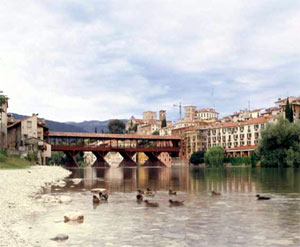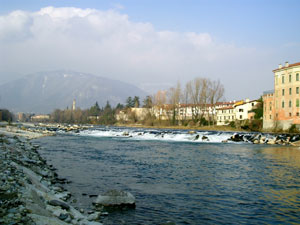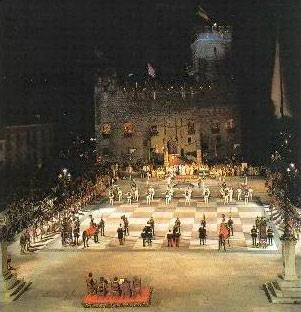You may have heard of the Paris – Dakar car rally, well, here's a slightly different take on the idea of driving a car across deserts and getting lost, but for those with less cash. The aim is to drive the route from Plymouth in the south west of the UK to Banjul in The Gambia (on a limited budget) with the principle aim of helping some charitable causes in Senegal and The Gambia. The rules include competing in a car that costs less than £100, not spending any more than £15 on getting the car ready and having no assistance whatsoever, once under way. If this sounds like your cup of tea, take a look at: http://www.plymouth-dakar.co .uk/
Category Archives: enewsletter
Pakistan Earthquake Appeal
On October 8th, an earthquake around 7.6 on the Richter scale hit close to Muzaffarabad in Pakistan-administered Kashmir. Over 80,000 people have died, at least 80,000 injured and 3.3 million people are homeless and trying to survive in icy conditions. Why is it that the world has been so slow to respond with aid?
The tsunami disaster of 26th December received not only much greater media attention but considerably more funds and aid from overseas donors.
If you want to try and remedy this in your own way, why not make a contribution, there are hundreds of organisations coordinating relief efforts.
Here is a small selection:
- Save the Children
- International Rescue Committee
- Concern
-
Oxfam
- American Red Cross
- Grameen Foundation US
No Kissing at Indian Wedding
An Israeli couple were fined 500 Indian rupees ($11) each for embracing and kissing after getting married in a traditional Hindu ceremony in the northwestern Indian town Pushkar.
The Israeli Embassy in New Delhi confirmed the incident and identified the couple as Alon Orpaz and Tehila Salev, who decided to get married while visiting India.
A local newspaper said that priests at Pushkar's Brahma temple were so cross when the couple smooched as hymns were still being chanted that they filed a police complaint. A court in Pushkar then charged them with indecency and ordered them to pay the fine or face 10 days in prison, the newspaper reported.
The couple decided to pay, it said. “We will not tolerate any cultural pollution of this sort,” the newspaper quoted a priest, Ladoo Ram Sharma, as saying.
Get In Print
Europe From a Backpack travel book series are now accepting submissions for Italy From a Backpack and Spain From a Backpack. They are looking for first-person must-tell stories. If you have a story to tell, visit www.EuropeBackpack.com for details.
Length: Stories average 800-2,000 words. While we will accept stories up to 3,000 words, shorter stories have a better chance of being accepted.
How to Submit: Send your story by MS Word attachment to submit@EuropeBackpack.com with the following information (make sure to include all information in the Word Document):
- name
- story title
- story location
- address
- phone
- primary e-mail
- secondary e-mail
- College or University you graduated from
- Include a fun and brief bio after them story
Deadlines: The following are the deadline dates for submitting stories for Italy From a Backpack and Spain From a Backpack.
- Round 1: January 31, 2006
- Round 2: March 28, 2006
Destination Guide to Bassano del Grappa by Karen Bryan
Bassano sits in a stunning location by the River Brenta with
Monte Grappa in the background. It is about 35 kilometres north
east of Vicenza. The town's symbols are said to be the
Palladian bridge, white asparagus, ceramics and the Grappa
liqueur. I visited the town for the day in February 2005.  I really liked the location, the fresh air, the
fast flowing river and the picturesque bridge. If you like to be
slightly off the tourist track and would prefer a more rural
setting for short break or as a base for a touring holiday,
Bassano is ideal.
I really liked the location, the fresh air, the
fast flowing river and the picturesque bridge. If you like to be
slightly off the tourist track and would prefer a more rural
setting for short break or as a base for a touring holiday,
Bassano is ideal.
How to get there
The nearest airports are Treviso, used by Ryanair as its airport for Venice and Venice Marco Polo. You could hire a car from the airport. It is possible to reach Bassano by train on the Vicenzia – Trento or Padova – Bassano lines.
History
It is often assumed that the city takes its name from the well known liqueur Grappa. This is not the case; it is named after Monte Grappa. The mountain's name is said to originate from crapp or greep, meaning crag in an ancient pre-Latin language. The liqueur Grappa's name stems from grappolo, meaning a cluster of grapes.
Grappa liqueur has been produced in Bassano since 1779 when Bortolo Nardini bought a Grapperia on the Brenta River bank. Grappa is made from the by-products of wine making, the seeds, stems and skins. The company is still run by members of the Nardini family, accounting for around one quarter of annual grappa production.
Ponte Vecchia has become synonymous with Bassano.  The bridge
is first mentioned in the 11th century. The bridge has been
rebuilt several times due to flooding or destruction during wars.
It is still the original design by Palladio from 1569. The bridge
is built of wood, making it more resilient to the fast flowing
River Brenta.
The bridge
is first mentioned in the 11th century. The bridge has been
rebuilt several times due to flooding or destruction during wars.
It is still the original design by Palladio from 1569. The bridge
is built of wood, making it more resilient to the fast flowing
River Brenta.
There is a record of the city on St Mary's Hill from the 10th century. From the 14th to 18th century the city was under Venetian rule. It became well known for the manufacture of ceramics, wool, silk, iron and copper. The Remondini family ran one of the most up to date printing houses in Europe from the17th to the 19th century.
The Town Hall was first constructed in1405. Bartolomeo Ferranci installed the present clock mechanism in 1743. The interior walls are adorned by frescoes of 120 coats of arms.
White asparagus was first produced in the 16th century after Bassano experienced a hailstorm which destroyed the asparagus crop. The farmers dug up the part of the plant below the earth and discovered that it was so tender and delicious that they started to grow it underground permanently.
Parolini, a local nobleman, designed the Giardini Parolini in the early 19th century. In 1829 Parolini catalogued 3000 plant species in the garden.
During the First World War the Italians took a last stand against the Austrians in Monte Grappa where they entrenched themselves in tunnels and bunkers to repel the Austrian attackers. Over 12,000 Italian and 10,000 Austrian soldiers lost their lives in the numerous battles.
During the Second World War Italian partisans hid in Monte Grappa, organising raids on the main supply route from Germany to the German troops stationed in Italy. In 1944 the Germans took revenge by marching up the mountain behind women, children and elderly local inhabitants. Any partisans discovered or civilians suspected of assisting partisans were killed. There were public hangings and shootings with families forced to watch.
In 1946 the Italian prime minister awarded Basssano the gold medal for military valour. Every year the city commemorates these events during September.
The Museo degli Alpini was established in 1948 in memory of the Italian Alpine Troops It is located on the eastern side of the Ponte Vecchio. You have to enter it through a cafe. I found this rather confusing but the museum is down stairs to the left when you enter the cafe. Originally the collection was very small but has grown as more war relics have been gathered together. There are many original photos, uniforms and armoury.
Museo della Cermica is near the eastern side of the Ponte Vecchio. The building was constructed as the residence of Ferrari family, owners of a local silk factory. The entrance hall is adorned with a fresco by Giorgio Anseli. There are pieces of engraved ceramics from medieval times, Mainardi majolica pieces from the 17th and 18th century, along with modern pieces.
The Civic Musuem is one of the oldest in the Veneto region. It was built in1828 on the site of the convent of St Francis. It houses a collection of paintings by the Da Ponti family, Guariento and Magnasco, a collection of prints by the Remondini family. There is also an archaeological section and pieces by Antonio Canova.
Bassano boasts several churches. San Donato was built in 1208. It is claimed that St Francis of Assisi and St Anthony of Padua both stayed here during the third decade of the 13th century. The church was a hospital, run by Benedictine nuns in the 14th century, then a Fransican monastery during the 15th century. The church was restored in 1900, including work being done on the cell which was used by the two saints.
The Church of San Francesco was started in the mid 12th century, after the return of Ezzelino 11, the Stutterer, from the Holy Land. The Church of St John the Baptist was originally built in 1308 but reconstructed in the 18th century by local architect Giovanni Miazzi. Giambattista Piazzetti made the altarpiece of John the Baptist and Orzio Marinali created the statues of angels and the bas-reliefs.
The Cathedral of Holy Mary was a 10th century parish church in the original high part of the town. The present cathedral dates from the 17th century. The high altar piece and the painting of St Stephen are the work of Leandro di Ponte, and the sculptures are by Mainali. Di Giacomo Dacci made the organ and the three ceiling paintings are by Volpata.
Day trips
Marostica
Marostica is a 14th century medieval town where the original town
wall stands intact. It is best known as the “town of
chess”. Every second year a match, with people dressed in
elaborate costumes to portray the pieces, is played on the giant
chessboard below the castle. This takes place on the second
Friday, Saturday and Sunday every second year, when the year ends
in an even number. This commemorates the chess match played in
1454 when the victor was to win the hand in marriage of Lianora,
the daughter of the Lord of the Castle of Marostica. Two suitors,
Rinaldo d'Angarano and Vieti da Vallonara, had fallen in love
with Lianora and were to fight a duel to see how would marry
Lianora. The Lord forbade the duel and order decreed that the
victor of the chess match would marry Lianora. However all was
not lost for the defeated suitor, as he would marry Lianora's
younger sister, Oldrata. The period costumes are permanently
displayed in the Lower Castle. 
Marostica holds a Cherry Festival every year during May and June. There are kiosks in the streets selling a variety of cherries including morello, roame, marostagne and sander. There is an annual exhibition of comic cartoons in the town. Every July and August local craftsmen display their work the exhibition hall of the Lower Caste. There are some lovely walks through the surrounding hills.
Asola
Asola is a charming hilltop town, with a castle, a cathedral with a altar piece by Lorenzo Lotto and the 15th century Palazzo della Ragione. It was called the “city of one thousand horizons” by Giosue Carducci, because of all the fantastic views. It was much favoured by the Venetian nobility. Caterina Corona, the former Queen of Cyprus, lived here in the late 15th century. Robert Browning, the English poet, bought a house ere in the mid 17th century. Eleanora Duse, credited with being the greatest actress of the Italian stage was also a resident. The travel writer Freya Stark was brought up in Asolo and spent a lot of time here between her various expeditions. There is an antiques market every second weekend of the month, except during July and August.
Karen Bryan is an independent travel consultant and writer, specialising in less well known destinations in Europe. Her websites are: www.europealacarte.co.uk, www.europe-culture-activity-tours
Know Your Riyals from Your Kwatcha
Need to convert currency?
Take a look at The Globetrotters Currency Converter – get the exchange rates for 164 currencies The Globetrotters Currency Cheat Sheet – create and print a currency converter table for your next trip.
Ice Kingdom of Animals
If you happen to be near Lubeck in Germany, there is a huge ice and snow sculpture festival opening 9th December. Forty ice sculptors will create sculptures for the “Kingdom of Animals” under supervision of Dave Willé. Artists from the United States, Canada Great Britain Belgium, Russia and the Netherlands carve icy animals within the coming weeks. The sculptors use a variety of methods to carve out their figures; some use chain saws, some draw a draft on ice cubes. Beginning on top of the cubes, artists always carve down to the bottom using an array of ladders and scaffolds. All in all, some 350,000 kilos of ice and 150,000 kilos of snow will be processed for the Ice and Snow Sculpture Festival.
Eleven Reasons to get Married in Scotland by Charlie Taylor
Scotland has been a favourite holiday destination for many years and now it has a growing reputation as a favourite destination for couples from around the world to tie the knot. Here are the eleven main reasons:-
1 There are no residency requirements. Couples from anywhere in the world can get married in Scotland. You don't have to live here. You don't need UK citizenship. All you have to do is complete the necessary legal formalities and you can marry within 24 hours of arriving here.
2 You can get married anywhere – absolutely anywhere – in the country. On a beach, in a castle, up a mountain, in a hotel, by a loch… your choices are limitless.
3 You can opt for a civil or a religious ceremony. The civil ceremony is more restrictive as regards your choice of venue because they have to be licensed by the local authority. But there are now so many venues licensed for civil ceremonies that, in practice, you will always find somewhere to match your dream.
4 A religious ceremony, conducted by a minister can be held anywhere. I have known them to be held on boats, in lighthouses and even on cliff-tops! Obliging and occasionally daring ministers can always be found.
5 Ceremonies can even be conducted by non-religious celebrants, including certain officers of the Humanist Society.
6 The choice of venues is staggering. From sophisticated Glasgow to traditional Edinburgh; from the rugged, breathtaking beauty of the Highlands to the Ayrshire coast; from imposing castle to pretty little village church, Scotland has it all.
7 You can fly into Glasgow, Prestwick, Edinburgh, Aberdeen or Inverness airports and be close to your wedding venue from the start.
8 So many people around the world have Scottish ancestry and love to search out their roots.
9 What better clothes to wear at your ceremony than the kilt, made especially for you in your own tartan.
10 And what better accompaniment as the bride enters the wedding venue than a Highland wedding tune played on bagpipes!
11 And after the ceremony, what better way to toast the health of the bride and groom than with a single malt whisky from a Scottish quaich in the country where it is made!
The truth is, there are lots of reasons for you to hold your wedding ceremony in Scotland. If you are in love, Scotland is the place for you. If you believe in romance, Scotland is the place for you. If you long for the mystery of the lochs, the glens, the castles and the mountains, Scotland is the place for you.
Charlie Taylor is one of the founders of Highland Country Weddings Ltd, a Scottish weddings agency with an international dimension. For more information, please visit
Seattle the Most Overpriced Place
According to Forbes magazine, for the second year in a row, Seattle takes the top spot in our study. Why? The city does poorly on all counts, but was at the bottom when it comes to job growth, and the cost of living is very high. “It's true the housing prices here have just gone through the stratosphere,” says Charles Knutson, spokesman for the Seattle Chamber of Commerce. The city got hit hard by the tech bubble, and took a big employment dive. “We're coming out of that, but if you're looking at a line chart, there's a huge gap between income and housing costs.” Still, Seattle may become easier to afford should big local employers such as Microsoft, Boeing and Starbucks stay healthy.
Red Light Tours
The UK's longest-running holiday operator Thomas Cook is offering family tours of Amsterdam's red-light district. The package costs £12, though half-price for children. Thomas Cook claims the tour, which is free to under threes, offers a 'fascinating insight into the oldest profession in the world'. A press release on the two-hour tour says it leaves at 8pm and 'will take visitors deep into the famous red-light district, accompanied by a reliable and trustworthy guide'. The brochure says: 'Begin with a drink at a prostitute information centre where a former prostitute will explain the system and answer any questions you may have. Then head for the Wallen (the red-light district) and see for yourself.'
